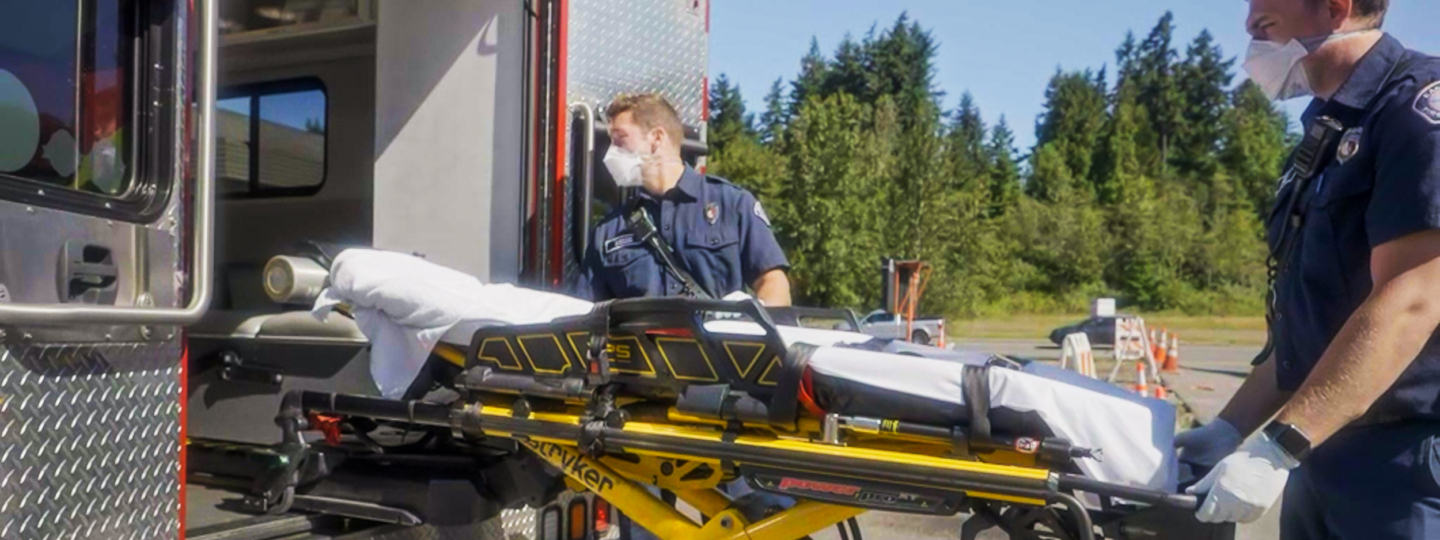EMS Ambulance Billing

EMS Ambulance Billing Questions
If you have any questions about an EMS ambulance bill, please contact:
Systems Design Billing Services
info@SDWems.com
800-238-9398
Visit Systems Design’s EMS Billing Services page for more information, including payment options, insurance and financial aid.
– Or –
East Pierce EMS Division
emsinfo@eastpiercefire.org
Direct Line: 253-447-3524
Secure Fax: 253-862-6933
FAQs
-
Why did we receive a bill for ambulance service? I thought East Pierce Fire & Rescue residents receive free ambulance service from the fire district?
East Pierce ambulance service is not actually free. However, if you are an East Pierce resident, who is transported by an East Pierce medic unit (ambulance), you should have no “out-of-pocket” expenses. We bill your insurance company, Medicare or Medicaid for the cost of the ambulance ride. Any additional costs, such as co-pays that you would normally need to pay will be “written off” against the funds received through our EMS Levy. Some residents will receive a copy of the ambulance bill statement, indicating the cost of the service provided, and stating that this is NOT a bill which requires payment. Instead, this statement is provided to you along with a request that you provide additional information so we can bill your health insurance provider(s).
-
What happens for people who have no insurance or those who live outside the fire district?
If you’re a district resident and don’t have health insurance, your entire bill is covered by the EMS levy. Non-residents, who happen to be in the district when they are transported by medic unit to the hospital, are responsible for co-pays or any portion of the ambulance bill not covered by their insurance.
-
Does East Pierce Fire & Rescue attempt to bill our insurance companies?
Yes. EPFR will bill your insurance company, Medicare and Medicaid providers to recover payments for ambulance transport. To be included in the “no out-of-pocket” cost EMS transport program, residents must complete and return any required paperwork sent to you by our billing service, Systems Design, or any paperwork sent to you by your own insurance provider. Correct, updated information is crucial for our ability to successfully bill insurance providers.
If district residents don’t comply with requests for information, they could end up being liable for the entire amount of the ambulance transport fee, and even end up being turned over to a collection agency.
-
What happens to the revenues collected from medic unit patient transport fees?
More than $2.8 million in ambulance transport fees are collected each year from health insurance companies, Medicare and Medicaid. These funds help cover a portion of the cost of providing EMS response and ambulance transport services to the community.
-
What happens if East Pierce doesn’t have any medic units available for a 9-1-1 medical call? Who comes, and do I have to pay the other ambulance provider?
East Pierce has four medic units available 24/7. We handle more than 98% of the EMS ambulance transports with our own medic units.
However, when all of our medic units are busy on other 9-1-1 medical or fire calls, we need to request “mutual aid” from neighboring fire departments and private ambulances. They send units in to back us up if we don’t have any available medic units.
We have reciprocal “mutual aid” transport agreements with most of our neighboring fire districts. If one of their medic units responds into our fire district and takes you to the emergency department, you receive the same “no out-of-pocket cost” ambulance service as if an East Pierce medic unit took you to the hospital. We reciprocate when we respond into their districts when they need mutual aid, we well.
-
What happens if a private ambulance takes me to the hospital?
In addition to our “mutual aid” responses from other fire departments, private ambulances are used occasionally to transport district residents to the hospital. In this case, patients will receive a separate bill from the private ambulance company and are responsible for any portion not covered by insurance. There is no mechanism to use the EMS Levy fund to cover any of those costs. Additionally, private ambulances are frequently used by urgent care clinics and assisted living centers to transport patients to hospitals for follow-up medical care. In this case, payment for these calls, which are not part of the 911 system, would be the responsibility of the patient.
-
Does this agreement apply if I’m a district resident, but get hurt in some area outside the district, such as Puyallup or Spanaway?
The reciprocal “no out-of-pocket expense” mutual aid agreement only extends to 9-1-1 calls inside our own district. If you become ill or injured in a neighboring fire district, even if we have a mutual aid transport agreement, you will be responsible for the ambulance bill if they transport you to a hospital. There is no EMS levy “write-off” provision when you are outside the district and become ill or injured.